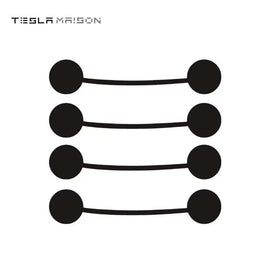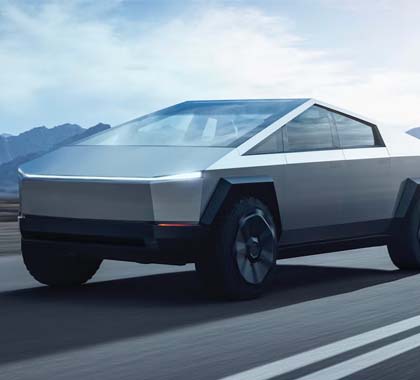You may have questions about charging your Tesla, whether you're a Tesla owner or prospective buyer. You may be wondering how much it costs to charge a Tesla. How can you charge your Tesla while on a long-distance trip?
How do you charge your Tesla? In order to charge a Tesla it is important that you know:
- Charge your Tesla at 90% when you use it daily, and 100% before long trips
- Plug in the Tesla all the time
- Charge the Tesla every day
- A Tesla can't be overcharged
Tesla ownership is much more than just a car. Tesla owners enjoy the ability to drive past gas stations, knowing they don't have to enter them. Tesla is a popular car since its release. However, many people have questions about the charging systems. This guide will answer these questions and many more.
Read More: 2023 Tesla Guide: Can Tesla Provide More Range With Its Current Technology?

Should you charge your Tesla at 100%?
It is impossible to say how much you should be charging your Tesla. The answer depends on several factors including the length of your trip and what model you own.
There is no need for you to charge your Tesla up to 100% unless your daily commute is more than 200 miles. The majority of models recommend charging the Tesla to 80-90%, with a lower cap of 30-40%. Elon Musk has himself recommended charging the Tesla daily between 30% and 80%.
Tesla recommends that you set a daily charging limit for your tesla to ensure that it doesn't exceed that limit. For the Tesla battery's health, it is best to limit the daily charge at 90%.
It is recommended that you charge your battery enough to reach the next stop on a long distance trip. You can avoid running out of power by leaving a buffer of 10-12%. The best way to avoid running out of power is by planning ahead. Your Tesla dashboard will calculate the calculations for you.

How much can you charge your Tesla?
Tesla's Battery Management System is built into every battery pack. This pack prevents you from overcharging your Tesla.
Battery Management System is made up of three components.
- Cells: The individual cells that comprise each lithium-Ion Battery
- Modules: Clusters of Lithium Ion Batteries in a systematic order.
- Cooling System: The system that cools down the individual modules when they charge
Sensors are attached to the connections of the battery pack that monitor each cell. Sensors send data back to the battery monitor system and then the system instructs the battery on how to react.
This technology will make it impossible for you to overcharge your Tesla. Tesla has a built-in security system that prevents overcharging. This system stops what is called trickle charging. The majority of systems charge at a rate 4.3 Voltz for each cell. The system will only charge to compensate for the self-discharge after the maximum charge has been reached. Tesla's battery will only charge at 4.03 volts, allowing it to maintain a full capacity.
What kind of battery does Tesla use?
Tesla chose a Panasonic cylindrical Li-ion Battery for its high efficiency and low cost per unit. The battery comes in a variety of standard sizes including AAA, AA, C and D. Tesla chose the cylindrical cell primarily because it offers high performance.
The cylindrical cell is more dense but difficult to fit into modules. The other 7,000 cells will help to carry the extra weight if something happens with one cell. Tesla's can operate even if some cells are damaged during a crash.
The single cylindrical cells are grouped into modules or clusters. Tesla can send and receive information about individual cells by connecting these cells with a Buss connector. Each module is rated at only 25 volts so the risk of an electric shock is minimal. It is safe to touch and you won't get an electric shock when you come in contact with the module.
A single wire acts as a fuses to connect each cylinder to the bus bars. These cells are able to last a long time because they use a cooling system that regulates the temperature.
Read More: Tesla Guide: What Happens If A Tesla Battery Died On The Road
Why should you leave your Tesla plugged in?
According to Torque News, the saying goes "A happy Tesla is a plugged in Tesla". You should always plug in your Tesla if you use it every day. Even if you only use your Tesla for one or two days per week, it is still important to plug in the Tesla and set the charging limit accordingly.
It is impossible to overcharge or damage your Tesla's battery by charging too much. Safety protocols are in place to prevent overcharging or damaging the car if you keep it plugged-in all the time. Battery management systems that come with each Tesla help keep batteries in top condition.
Charging your Tesla while the battery is still warm will provide you with the most efficient charge. Warm batteries charge faster than cold ones. Tesla is not damaged by leaving it plugged in once the battery has been fully charged.
If you leave it plugged in for too long, the range won't decrease. Tesla recommends that you leave your Tesla plugged in when not in use. If going on a long drive or a roadtrip, you can charge the battery to the full 100%.
Read More: Tesla Guide: Does Tesla Lose Power When It Is Parked In A Garage?
How Do I Know if My Tesla Is Charging?
Tesla has a nice color-coding system that you can find on their website. It explains what all of the different charging lights mean and what functions they are serving at the time.
The different options are:
- White: The charge port door is open. You can insert or remove the charging cable when you see this light.
- Blue: Your Tesla is aware that the connector has been plugged in and connected. At this point, it should establish a communication with the charging system.
- Blinking Blue: This light just indicates that it is establishing a connection with the Charging system.
- Blinking Green: The light you want to see when you are expecting your Tesla to be charging. The blinking green light indicates that the charge is in progress.
- Solid Green: The car is completely charged
- Solid Amber: The connection from the plug to the car is not fully plugged in. You should remove and reinsert the charge plug to the vehicle
- Blinking Amber: Your Tesla is charging but at a reduced rate. If you see this light, check the connection to the wall and other areas.
- Red: There is a fault detected, and your vehicle is not charging. Look at your instrument panel where your Tesla should indicate what is wrong.
These lights are universal, whether you are using the home charger plugs or the supercharger stations on the road.

Portable Charging A Tesla
Disappointedly, there is not a stand-alone product, such as solar panels, that is strong enough to charge a Tesla any more than 1-5 miles per day. Although the thought of a portable battery pack is appealing, it simply is just not possible.
The concept of solar charging a car has been a discussion since Toyota released solar panels on one of their Prius models. This was more of a gimmick, as the only thing they did was run the accessories on the car. Solar panels simply do not produce enough energy to charge the battery pack for Tesla.
Sparkcharge is a company that has recently come out with a portable battery pack to charge Electric vehicles on the road. However, it isn't yet clear whether they are available for residential purchase, or commercial use only.
The other concern with the Sparkcharge is having the capability of charging a Tesla for an affordable price point. With all of the supercharger stations popping up around the country, the Sparkcharge may become unnecessary
Read More: 2023 Tesla Guide: Is The Tesla Model 3 An Ideal Family Car?
Can you Take a Tesla Across the Country?
The short answer is yes, you can drive a Tesla across the country, I've done it myself! There are many places to stop and charge your Tesla along the way from California to New York and everywhere in between. You can use Tesla's trip planner to plan your route.
Some critics claim that it adds a lot of time to your route, and it does add time. Considering a trip from central California to Maine in a gas-powered vehicle is rated for 48 hours through Google Maps, but the same trip is 65 hours on Tesla's planner because of charging stops.
In my personal experience, for every 5 hours of commuting in a gas car, it takes 6-6.5 hours in a Tesla with charging stops.
Planning your trip out is easy because the Tesla routes you to superchargers along your route without you having to do any calculations yourself. You have more stops, and if you treat your charge stops as pit stops, then it won't really add too much extra time to your trip. If you are stopping for the night, you can even check if the hotel has free-charging stations on site to wake up to a free full charge.
Read More: Tesla Guide: How To Charge A Tesla While On A Road Trip?
Dealing with Range Anxiety
Range anxiety is the idea that you will run out of charge before you reach your destination. Similar to the idea that you will run out of gas before reaching the next destination. Gas stations are on every corner or at least one in every town in the US, but chargers are not (yet).
This is really something that you will likely worry about in the beginning, but then get more comfortable in time. As you drive your Tesla more, especially on long drives, you get more confident that the battery estimation is very accurate and it will alert you far before you get into any trouble. If you do happen to find yourself without power, on the side of the road, you would need to be towed.
However, Tesla has a feature inside the map system that will let you know, and route you to the nearest charge station well before you run out of juice.
If you are going out of town, just plan your trip appropriately, and charge your Tesla before you leave. Make sure you bring some added connectors with you in case you decide to spend the night in an area that doesn't have a Tesla supercharger station.
What Does It Cost to Charge a Tesla?
Depending on the model of Tesla, and the current rate of Electricity per Kilo Watt Hour (KWH), It can cost anywhere from $11.47 to $15.29 for a full charge from 0%-100%. Solar Reviews does a great job of Breaking down these costs on their site.
This chart below will compare the costs based on the national average cost per Kilowatt and the national average cost per gallon of gas.
| Model | KWH/Tank size | Fuel | Range | Cost to Fill | Cost Per 100 Miles | Cost Per Mile |
| Model 3 | 75 | Electric | 310 Miles | $11.47 | $3.7 | $.037 |
| S | 100 | Electric | 370 Miles | $15.29 | $4.13 | $.041 |
| X | 60-100 | Electric | 295 Miles | $15.29 | $5.20 | $.052 |
| Gas Car (ICE) | 12 Gallon Tank | Gas | 350 Miles | $31.44 | $8.90 | $.089 |
How Much Does It Cost to Own a Tesla?
The average maintenance costs on Tesla over a five-year period are around $2,800. That is an impressively low maintenance cost in comparison to other gas-powered machines. The average person will spend only $712 per year to charge a Tesla.
A Gas-powered motor at current gas prices would costs around $1200 per year just in fuel. Tesla will also retain a higher value over a 5-year period at 17% estimated by Kelly Bluebook. Federal Tax Credits are also available but will be disappearing soon.
Tesla boasts a 4/year 50,000-mile comprehensive warranty and an 8 year/100,000-mile battery warranty.
Maintenance costs on a Tesla are significantly lower, as it is mostly just tires and tire rotations.
Do Tesla's Work Well in the Cold
One of the major gripes about owning a Tesla is the battery power below 50 degrees Fahrenheit. There is virtually nothing that Tesla can do to combat this issue simply because of the lithium Ion batteries that are used.
All cars will perform differently in colder climates. In some climates the lead-based batteries have to be completely removed in order to use them the next morning. Some towns even recommend using an electric battery blanket in order to save the battery of your gas-powered car in Sub-zero temperatures.
Read More: Tesla Guide: Is It A Good Idea To Buy A Used Tesla?

Considering what Tesla is up against in the cold weather, being a few miles off in terms of predicting the range the car will go is a small problem to combat.
Although you may experience a slower charge time or a miscalculation of the distance remaining, Tesla does great in arctic climates overall. The alternative is that the lithium Ion batteries cannot be charged at all in sub-zero temperatures. Due to Tesla's Battery Maintenance System, you don't have to worry about this because the maintenance system takes care of the battery temperatures for you. You just may need to start your Tesla and let it warm up a bit before charging it.
How Often Should You Charge a Tesla?
The general consensus is that you should charge your Tesla nightly up to 80-90% fully charged. Lithium-Ion Batteries have some tricky physics behind them, to say the least. The first 20% and the last 20% are the trickiest parts.
Too little electricity or too much can cause damage to the batteries, or cells. Keeping your daily charge, around 90% is the most recommended solution. You also don't want to keep your Tesla anywhere near 100% or 0% for any longer than you must.
If you choose to go a different route, some people only charge their Tesla weekly after 200-300 miles. This is okay, but not the common practice. Some people feel that a 50% charge is sufficient and will keep the battery life lasting longer. The only issue with this logic is that 50% of the battery never sees electricity.
If it is a 4-cell lithium Ion Battery, then only 2 cells are being used. Charging to at least 80% ensures that you are not overcharging or undercharging the battery.
Can I Use Solar to Charge My Tesla?
With the recent acquisition of Solar City by Tesla, the question comes as no surprise as to if you can use solar to charge the Tesla. Yes, it is estimated that you would need to add roughly about ten full-sized solar panels to properly charge a Tesla.
Considering the costs associated with adding ten solar panels to the house, and how much It would cost to just use the wall outlet, it is cheaper not to use solar if you already have a system. You would be adding an additional $2,000 just for the panels, and possibly another $2,000 for installation, not including getting city permits.
If you currently do not have a solar system in place at your home, then it may be beneficial to consider getting one. The cost of obtaining a solar system is a sunk cost at this point, meaning that you would incur no additional cost if you chose not to include the Tesla in your estimation.
Since you are going to spend the money anyway (Sunk Cost), your cost of charging your Tesla on solar just decreased dramatically. You would probably save money at this point, and if you somehow wind up going back to an ICE vehicle, you would still have the added power production from the solar panels.
Charging Lithium-Ion Batteries
Unlike lead or acid-based charges, the Lithium-Ion battery charges slightly different. If there is constant current, the rate in which the battery is fully charged will increase or decrease with the voltage. The higher the voltage, the quicker the cells charge in the battery.
Usually, this happens in spurts or levels that are pre-determined by the engineers that designed the battery pack. Lithium-Ion batteries also do not typically have a trickle charge system like found in the lead-acid system.
The Lithium-Ion battery system cannot accept any overcharge, so limiting the amount of charge to a certain level is set up by the engineers also.
Gimmicks to prolong battery life simply do not work. Most high capacity systems charge at a rate of 4.3V per cell. The average Tesla has about 7,000 lithium-ion cells in its battery. This would mean that to charge the Tesla instantly, you would need 30,700 Volts and enough amperage to transport the electricity to the battery.
Read More: Tesla Guide: What Is Tesla Valet Mode? And How To Use It?
How Long Do Lithium Ion Batteries Take to Charge?
Lithium-Ion batteries only charge to capacity, and will not accept anything over the capacity of electricity it was designed for. The Lithium-Ion Battery is said to be fully charged when the current inside reaches a decreased level of 3-5%.
Most manufacturers only recommend charging to 80% capacity to avoid overcharge and prolong battery life. At higher voltages the charge rate increases; however, the efficiency will stay the same at around 99%.
Lithium-Ion can only be charged with low voltage because they cannot accept a high voltage input. The way to fast charge is to avoid the "Saturation charge" area of a Lithium-ion battery. This usually charges the battery to about 85% of capacity in a relatively short time frame.
You always want to use the appropriate charger for any lithium-Ion batteries. When the battery is first plugged in, the first portion of the battery charges really fast. As the battery fills, the voltage rate per cell decreases, making the current decrease, slowing down the charge. This is how Tesla's Supercharger works.
Self-Discharge and Lithium-Ion Batteries
All Batteries will self-discharge at some point, and the process of self-discharging comes at different rates depending on a number of different factors.
Lithium-Ion batteries lose electricity asymptotical, which means that the longer it sits, the lower the rate in which it leaks.
The self-discharge rate on a Lithium-Ion Battery goes like this:
- 5% in the first 24 hours
- 1-2% per month
- +3% for the safety circuit
This means that if you left your Tesla unplugged but charged at 80% capacity for an entire month, you would have lost only 10% of the full charge and would be around 70% charged. Let's say you left it for a year, unplugged, it should still have about 40% left. These are estimates, and assume that you have both Sentry Mode or Cabin Overheat Protection disabled.
The temperature also affects the discharge capacity, as well. You can lose up to 20% if the temperature is at around 77 Degrees Fahrenheit. If you keep the charge between 40 and 60%, you would only lose 4%.

Tesla's Brightly-Charged Future
Tesla's strong point isn't in developing cars but in developing energy efficiency. It is more about the experience than the actual product itself. As taxes continue to rise and oil eventually becomes scarce enough. The only thing left is going to be clean energy.
With Tesla's ability to change consumers' minds about the entire driving experience, they have developed an extremely brand loyal customer. Tesla is not going to stop with just selling cars to private owners.
Tesla is an engineering company, and it is lighting the future of energy efficiency for many customers. The luxury features that we receive in the private vehicle market are widely available in other transportation markets. Tesla seems to be reverse-engineering the entire industry.
The more that the experience changes the way consumers expect driving to be like, or want it to be like, the more Tesla will capture the market share. After all, who wants to stop at a gas station every 200 miles anymore?






























